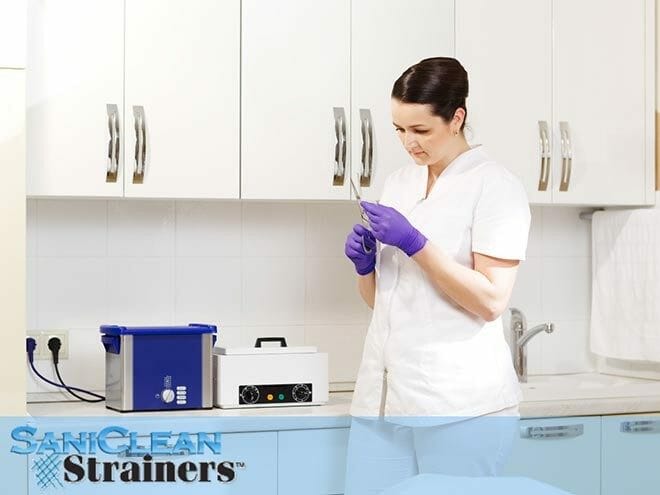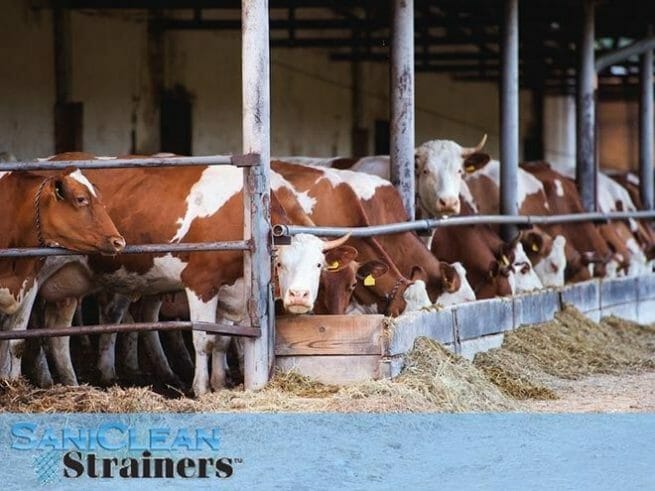The 3-A Sanitary General Requirements were first introduced in 1920 to create a safe protocol for milk pipe fittings. Currently, 3-A sanitary standards are designed to improve inspections and streamline reviews. The 3-A Sanitary Standard General Requirements and 3-A equipment offer real benefits to the massive food processing industry. SaniClean Strainers offers 3-A certified equipment. This blog provides the information our customers need to know on the 3-A Sanitary Standard General Requirements.
According to the Centers for Disease Control and Prevention, a staggering 48 million people contract foodborne illnesses every year, which causes a sobering 3,000 deaths annually. Because of these harrowing numbers, most professionals who work in the food equipment manufacturing or related fields will have at least heard of 3-A Sanitary Standard General Requirements. Today, the 3-A Administrative Symbol Council is representative of the Food and Drug Administration (FDA) and the United States Department of Agriculture (USDA) as 3-A SSI.
For several decades, the 3-A sanitary symbol applied exclusively to the dairy industry. However, these previously exclusive 3-A dairy standards are now being used across various food processing industries to improve inspections and streamline reviews. Continue reading to learn more about the 3-A Sanitary Standard General requirements and the benefits of 3-A certified equipment.

Brief History of 3-A Sanitary Standards
The 3-A Sanitary General Requirements were originally developed back in 1920 by three different interest groups as a safety protocol for ensuring the hygienic safety of milk pipe fittings. The number “3” refers to the three original groups who started laying the groundwork for the standards:
- Dairy processors
- Equipment makers
- Sanitarians
Since the beginning, the number of 3-A Sanitary Standard General Requirements has increased to 70 and includes equipment across the following categories:
- Farm/raw milk
- Pumps and mixers
- Heat exchangers
- Fittings and valves
- Instruments
- Concentrating equipment
- Conveyors and feeders
- Vessels
- Fillers
- Butter and cheese equipment
In addition to the 3-A Sanitary Standard General Requirements, 3-A SSI has developed 3-A Accepted Practices that provide oversight and insight into the way processing systems are installed and designed. These are centered on plant support as well as process and cleaning systems.
What Do the 3-A Dairy Sanitary Standards Do?
The 3-A dairy sanitary standards are essentially designed to improve inspections and streamline reviews. Because no organization has regulatory authority, food processors and equipment manufacturers voluntarily apply these requirements. In doing so, these parties work to ensure favorable outcomes when local, state, and federal inspectors visit.
Most of these regulatory agencies use the 3-A Sanitary Standards General Requirements as a basis or guideline for reference. In fact, some municipalities and states have even adopted the standards in their regulatory codes. The key missions are to:
- Prevent contamination of food intended for human consumption
- Ensure that all contact surfaces are mechanically dismantled and cleaned manually for thorough inspections.

Uses for 3-A Sanitary Standards
While consumers benefit from enhanced safety, 3-A Sanitary Standard General Requirements also benefits the larger food processing industry.
Guaranteed Advantages of 3-A Dairy Sanitary Standards
One of the advantages of implementing 3-A Sanitary Standard General Requirements, especially when it comes to 3-A certified equipment, is that businesses are confident sanitary needs are being adequately met. 3-A Certified Equipment is uniquely engineered for fast and seamless inspections. At the same time, it helps reduce contamination. Together these two key attributes pave the way for a smooth and clear-cut inspection process when it arises.
Processors Benefit from 3-A 3-A Sanitary Symbol
Experienced processors are well aware of the vital nature of using methods that naturally adhere to codes for sanitation. And when businesses invest in equipment that has the 3-A sanitary symbol, they will have equipment that is easy to clean and take apart. At the same time, the 3-A certified equipment may even feature mechanical cleaning solutions that may promote even more sanitary codes.
Manufacturers of Equipment Benefit from the 3-A Sanitary Symbol
There are several reasons why the largest and most profitable equipment manufacturers actively engage and participate in 3-A dairy sanitary standards. One of the key drivers is the overwhelming power of the 3-A sanitary symbol. When customers see this symbol, they will rest easier knowing their ability to create safe food with minimal risk of contamination is greatly improved. For manufacturers of equipment, it leads to increased customer satisfaction.
Find 3-A Certified Equipment Solutions at SaniClean Strainers
For over 107 years, Newark Wire has specialized in creating custom and standard wire mesh products and industrial strainers. These critical components play an especially vital role throughout the food processing industry. When equipment wears the 3-A sanitary symbol, it has significant value because it means it has been verified by an independent party.
Contact SaniClean Strainers today for more information about 3-A certified equipment and the 3-A Sanitary Standard General Requirements.
